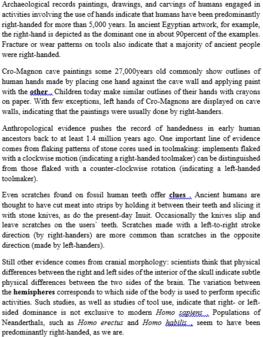Read the following passage and mark the letter A, B, c, or D on your answer sheet to indicate the correct answer to each of the questions from 28 to 34.
If you ask any Vietnamese girl right now who she has a crush on, chances are you will encounter the name of the 20-year-old goalkeeper who plays for Vietnam national team. Bui Tien Dung made a name for himself in the AFC U23 Championship where he accurately blocked opponents' shots time after time and saved Vietnam’s chance at the championship in the process. Bui Tien Dung was born on February 28th, 1997 in a poor farming family in Thanh Hoa Province. Dung has loved soccer since he was a kid, but his family was so poor that they could not even
afford a plastic soccer ball for him and his brother. The Bui brothers had to resort to playing with balls made from scrap papers and old grapefruits.
Dung's parents recognized the brothers' passion for football and used the little money they had to support their sons' early training. When a big football club in the city announced a recruitment event, Dung convinced his younger brother to go to the tryout. He passed on the opportunity knowing that his parents could not afford to have both their sons gone to city.
While his younger brother training in the city, Dung's local training center went bankrupted and abruptly ended Dung's football career. For a year, instead of kicking balls, the young man worked as a construction worker to support his parents. He seemingly gave up on football.
Fate finally smiled on Dung when a football coach rediscovered him and sent him to train with a local football team. Reentering the football field, Dung wanted to play in a defense position but he was pushed to goalkeeping because of his height. At first, Dung was unhappy about his new position, but his parents advised him to follow and make the best out of it. And Dung did.
The young goalkeeper trained hard for his new position and patiently climbed up the ranks the following years. Through hard work, he was named the best goalkeeper of Vietnam's U19 division. Those who have worked with Dung described him as a likable young man. He is very respectful to others and speaks very little. However, when the gloves are on, the nice young man transforms into a fierce competitor and an unyielding goalkeeper.
At AFC U23 Championship, Dung finally reunited with his brother on the field. They fought battle after battle together with other amazing players on the team and helped Vietnam made history for Southeast Asian football.
Even though Vietnam came short of winning the championship, Dung and his teammates are already heroes and legends in the heart of Vietnamese people. They played fairly and lost with glory and grace.
Question 30. Which of the following could best replace the word "afford" ?
A. buy
B. sell
C. throw
D. give



Đáp án A
Từ nào dưới đây có thể được dùng để thay thế cho từ “afford”?
A. mua B. bán C. vứt đi D. đưa cho
Căn cứ vào câu: “Dung has loved soccer since he was a kid, but his family was so poor that they could not even afford a plastic soccer ball for him and his brother.” (Dũng đã yêu bóng đá từ khi anh ấy còn là một đứa trẻ nhưng gia đình anh ấy nghèo đến nỗi mà họ thậm chí không thể có đủ tiền để mua cho anh em anh ấy một quả bóng nhựa.)